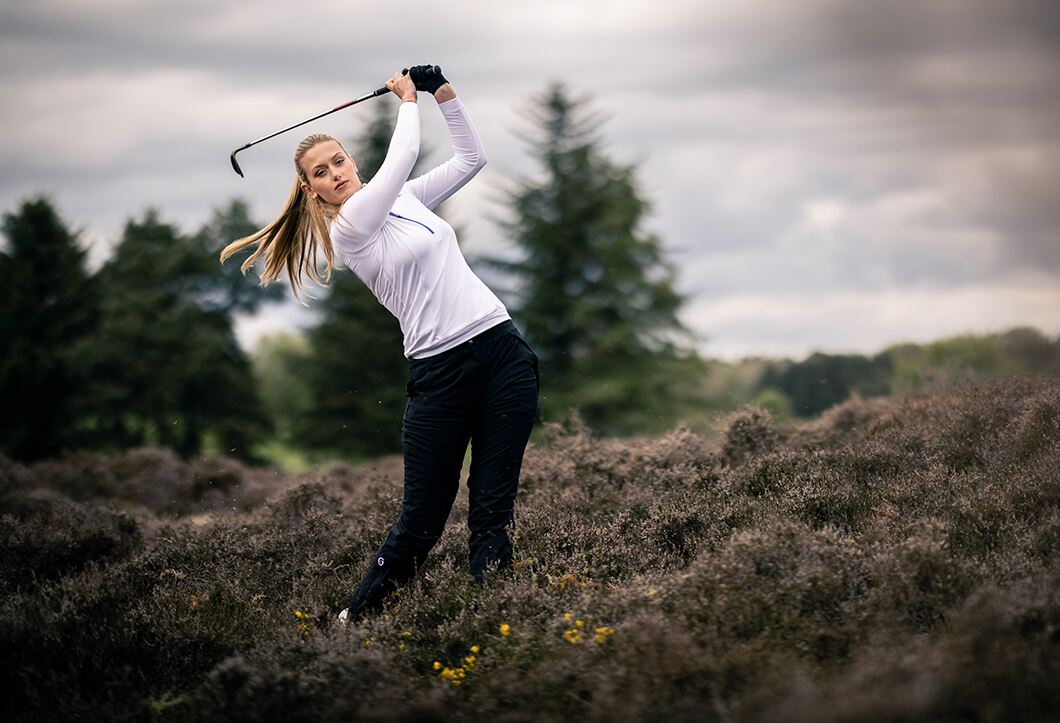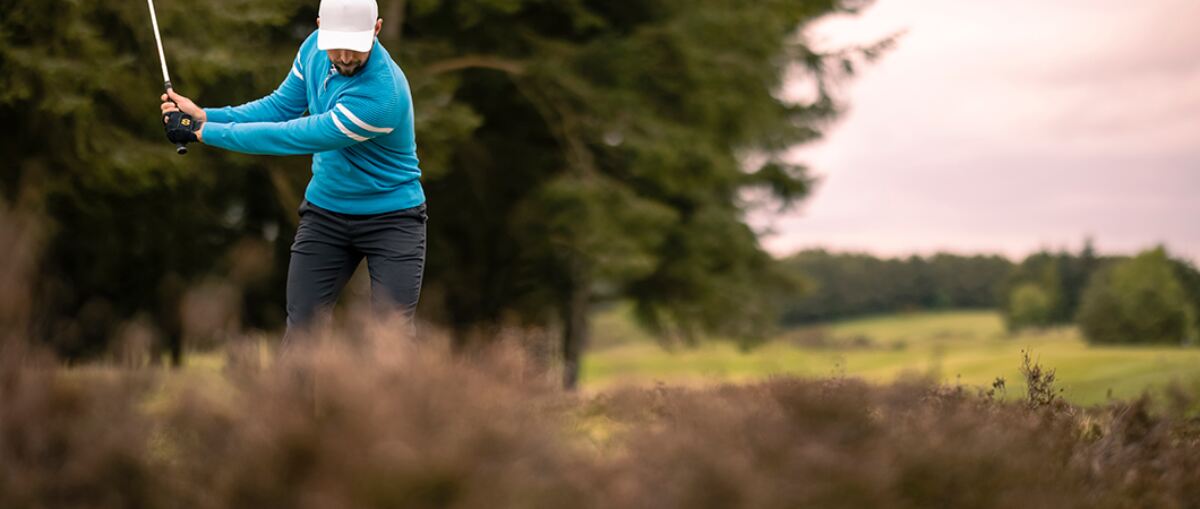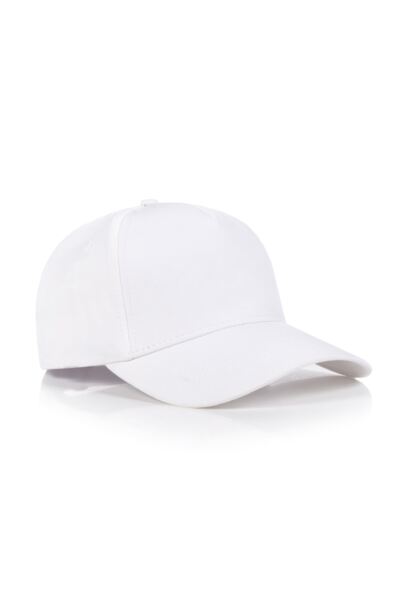Table of Contents
- Where does the Mulligan fit into the game of golf?
- The origin of the Mulligan
- What is a Mulligan in golf exactly?
- The purpose of a Mulligan
- Number of Mulligans allowed
- The stigma around when to ask for a Mulligan in golf
- When not to ask for a Mulligan on the golf course
- Make your golfing game as good as it can be with Glenmuir
- FAQs
- Final thoughts
Golf is certainly a game of two halves; while it is extremely enjoyable and rewarding, it is also one of the most potentially frustrating sports in which you can take part. Messing up a shot or that all-important putt can make or break an otherwise pleasant afternoon spent on the links.
Thankfully, when it comes to amateur events or even charity ones, golfers are often afforded a mulligan, which will allow another chance on a shot - but there are limits.
If you want to know what a mulligan is in golf, how and when to use it, and when definitely not to ask for one, read on to find out more.
Where does the Mulligan fit into the game of golf?
As you will be aware, golf has a lot of rules, and many golfers are absolute sticklers for them!
A Mulligan in golf has quite a bit to do with the old rule where the ball is played exactly how it lies. This rule means that there is no chance to improve the area where you intend to take your swing, known as the lie, or where the golf ball is intended to be placed, known as the line of play.
Taking a shot like this can prove extremely tricky and means that your shot should be taken from wherever the ball has landed, without adjusting anything. Sometimes this can prove to be near impossible, depending on how unlucky you got with your shot.
There are some exceptions to this rule, thank goodness, and golfing officials usually implement these exceptions on a case-by-case basis.
That's where a Mulligan can sometimes come in handy. If your golfing buddies are in agreement, it may be possible to replay a shot if you have been hit by bad fortune, a sudden spike in the weather, or just by taking an atrocious previous shot!
However, it needs to be said; Mulligans are not mentioned in the official rules of golf.
So, what's the backstory to the Mulligan?Next, we discuss the origin of this second-chance shot.
The origin of the Mulligan
David Mulligan
The USGA, otherwise known as the United States Golf Association, claims that the term is named after one David Bernard Mulligan, a Canadian golfer who played back in the 1920s, primarily at Lambert Country Club in Quebec.
Again, this story is somewhat cloudy, but there are said to be several possible events that may have laid the foundation of what we know the Mulligan to be today.
The first story goes that Mr Mulligan played a 'correction shot' after his first tee shot went array. Those present believed it would be a fitting tribute to the man to name this free shot after their contemporary, and so the Mulligan shot was born. Mulligan was then said to have popularised the shot when he moved to the United States.
The second tale goes that Mulligan had had a rather hair-raising car journey to the golf course which made him on-edge and shaky. He was then kindly given another shot after disastrously missing his.
The last story involving David Mulligan states that he had overslept and was terribly late for the golf course. His fellow players allowed Mulligan an extra shot to make up the tee time.
John A. Mulligan
Yet, there are theories that David Mulligan has nothing to do with the invention of the Mulligan and, actually, it was a John A. Mulligan, affectionately known as 'Buddy'. Buddy was a locker room attendant at a course called Essex Fells Country Club in New Jersey during the '30s.
When he wasn't working as a locker room attendant, he would often be found playing on the course with professional golfers. One day, Mulligan was said to have hit an awful shot and begged his playing partners for a second chance, given that the two had been able to practise while Mulligan had been working.
An unfriendly nickname for Irish players
Yet another theory put forward revolves around an unsavoury slur directed towards the increase of Irish players populating American golf courses at the time, when they were considered to be embarrassingly bad at the game.
Whatever version you believe, the truth of the matter is the Mulligan is a powerful unofficial rule by which many players today still stand.
But, what exactly is a Mulligan? We dissect the term next.
What is a Mulligan in golf exactly?
Now we (somewhat) know the origin of the mulligan, the term needs to be fully understood to incorporate it into your golfing game to improve your play.
Thankfully, a mulligan in golf is rather straightforward.
In short, a mulligan will allow any amateur or charity player to replay a shot from the previous stroke and face a penalty or repercussions from doing so.
It is used in a casual round of golf when a shot has gone array, or there's been an Act of God, whereby the weather suddenly manipulates the spin of the golf ball. It has the advantage of allowing the game to be played smoother, as well as speeding up play generally. If the ball gets lost, players don't have to go searching; the shot can simply be retaken as a correction shot.
There is one major stipulation to playing a Mulligan shot, however. All players must agree to allow Mulligans to be used in a game of golf before anyone can call for one.
If a competition does not allow for Mulligans to be played and a player tries to take a Mulligan shot or even calls for one, for that matter, it can be seen as serious enough a violation that a player can be disqualified.
The purpose of a Mulligan
A Mulligan offers an excellent chance in informal play to get a second shot when things haven't quite gone your way. It can make the whole game much more relaxed, allowing you to maintain your sanity when things don't go to plan!
There are many reasons why a Mulligan would be requested, including:
- A terrible tee shot
- There is a lost golf ball
- The ball lands in the bunker
- The ball moves into woods or rough patches
- Or simply an unlucky shot
While Mulligans are a handy tool to have, there are exceptions to when you can use them. For instance, they are only permitted to be carried out on tee shots, and how many are allowed will always depend on the group consensus.
If all the players agree, a few Mulligans may be allowed if there has been more than one bad shot or lost ball.
The stigma around when to ask for a Mulligan in golf
While the Mulligan is a great way to relax during a game of golf, it isn't always widely accepted by fellow players and asking for a correction shot can potentially cause some friction.
Ultimately, it depends on with whom you are playing. In an informal setting, your fellow players shouldn't have much trouble accepting a Mulligan; after all, your playing partners agreed before the game that Mulligans could be used.
When not to ask for a Mulligan on the golf course
When a golfer swings a shot off the first tee out of bounds, it is a good time to think about implementing the Mulligan rules. It allows a freer game, but too many Mulligans can spoil some of the fun for those more competitive golfers.
If it upsets the pace or if there are a group of players behind you that are moving through the course quickly, a provisional Mulligan is probably not the best idea.
If you are playing well in general, it is also not advised to ask for a Mulligan. It's just not seen as very sporting as it could - potentially, at least - give an unfair advantage against others.
Make your golfing game as good as it can be with Glenmuir
We at Glenmuir have everything you will ever need for an above-par performance on the green. Check out our unique range of accessories, golf bag towels, and much more to allow you to focus on the important things while indulging in 18 holes.
FAQs
Do professional golfers use Mulligans?
What about charity events?
How do you score a Mulligan in golf?
What is the difference between a Mulligan and a handicap in golf?
A Mulligan is simply a second chance shot when a golfer has hit a poor tee shot that they would rather forget! During an informal and friendly game of golf, there is no penalty for performing one.
A handicap, however, is completely different. It is an official calculation of a golfer's 10 best scores out of the last 20 rounds they have played. The lower the handicap, the better the golfer's current performance.
What is a Gilligan in golf?
Final thoughts
Mulligans are a great way to keep a golf game relaxed and stress-free, allowing an extra shot to replace a poor one. Although they are not permitted in professional tournaments, many amateurs use Mulligans when they have hit a tricky situation on the golf course.
Of course, being able to even ask for a Mulligan is dependent on the group. Before the commencement of the game, you should agree to allow Mulligans if there is a bad shot or two - or more.
After all, golf should be a relaxing sport, played with good sportsmanship and even a bit of humour.
While we may never know the precise origin of the Mulligan, one thing is clear; an early Sunday morning on the golf course with friends wouldn't quite be the same without it.
Happy golfing!






